Hart Bros Seeds is a seed multiplication business located at 263 Coffin Rock Road, Erin Vale, Junee, New South Wales (NSW) in Australia.
The Irish Tillage and Land Use Society (ITLUS) tour visited there in January 2020 and we met with its director Robert Hart.
He told us that the seed business in Australia was government controlled up to about 40 years ago. His father started the business in the 1960s.
Somewhere prior to 2000, the government got out of plant breeding, so the whole seed business changed. Royalties were introduced and companies entered into agreements and associations with plant breeders.
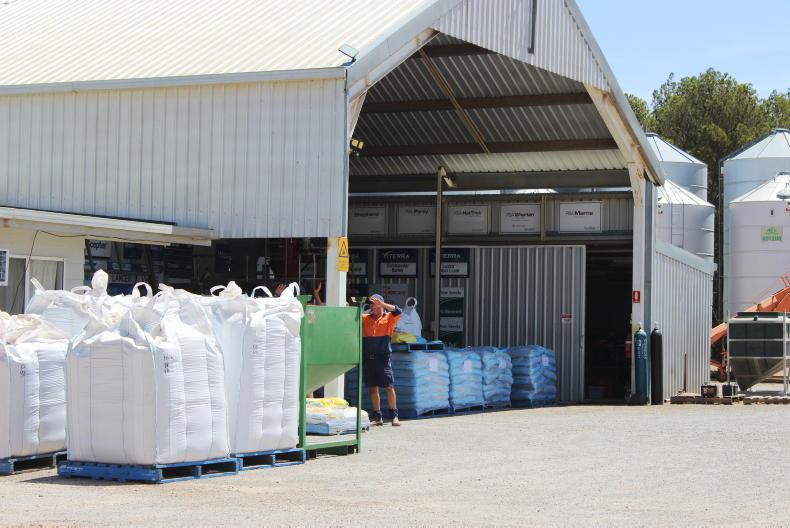
One of the many seed stores at Hart Bros.
Hart Bros Seeds is now primarily a wholesale seed multiplication business with very little seed sold direct to farmers.
Paper trail
“Our business is essentially a big paper trail,” Robert stated. "We clean and package seed for other companies.
"We also run two hectares of our own trials to evaluate varieties and a further three hectares for other companies."
The vast bulk of their seed business is for cereal varieties, but they also multiply canola and pulses, as well as some historical or heritage seeds.
Having variety trials, they run two field days per year to show off the varieties being grown.
One of these takes place in October to view the crops growing in the field and the second takes place in February to give the results of the evaluations. These are mainly targeted at agronomists, but farmers are also welcome.
Increasing pressure
Irish spring barley growers may be interested to know that RGT Planet is one of the varieties grown, so it casts a long shadow to a very different type of climate.
The seed multiplication business is under increasing pressure, because farmers are not registering the purchase of these new varieties.
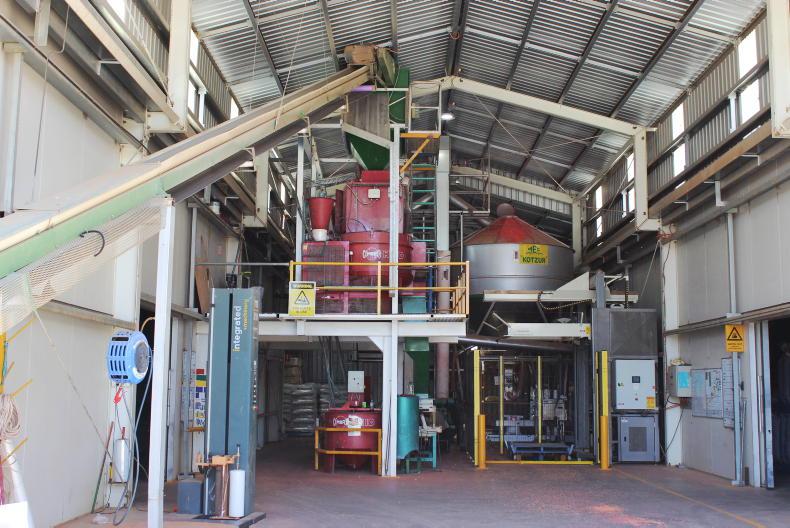
The seed treatment plant at Hart Bros Seeds.
Inter-farm seed trade is increasing and the overall seed business is contracting. This represents a real threat to the business and Robert was less than sure what the future holds for him.
Growers growing a new variety would often sell the produce to some of his friends and neighbours. Some seed businesses had already closed.
The seed business
Hart Bros Seeds normally sells 2,000t to 3,000t of seed each year. But when we visited, he reckoned that he had sold 1,800t for that year.
The lower amount was because they just did not have the seed to sell due to a big demand for anything that could be eaten, including seed, to counteract the extreme drought.
Seed is packed in small bags (40kg) and in 1t bags, but most is now sold in 1t bags. The dressing of the seed is always left as late as possible to leave flexibility on seed demand and use for as long as possible.
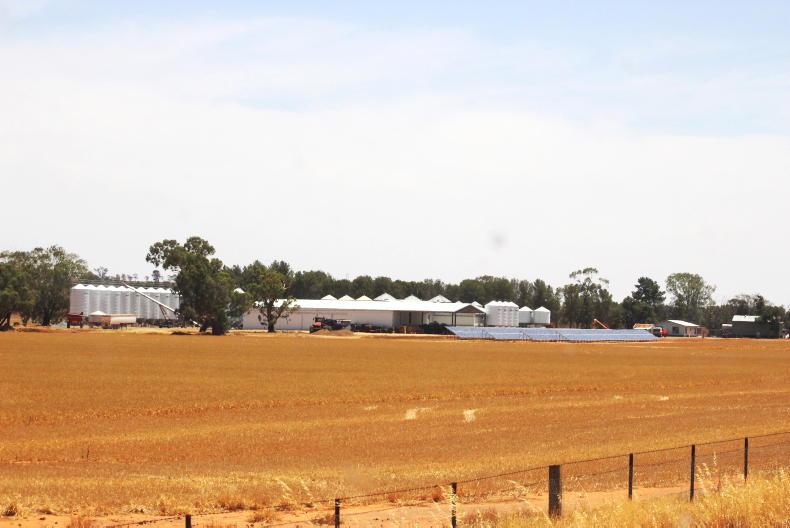
The Hart Bros business uses multiple bins to store seed of different varieties and they produce an amount of solar power.
Seed is subject to royalty payment, but Robert said that the royalty itself is voluntary payment, so growers could declare whether they wanted to pay it or not.
Interestingly, he said the system used is an “end-point royalty”, which means that the royalty is payable per tonne of the grain produced from the seed rather than on the tonne of the seed sown.
Technically, the royalty should be deducted at the point of sale to the first buyer. The royalty level tended to be between AUS$4/t and $5/t (€2.50/t to €3.20/t).
Different states are better or worse at declaring for royalty payment. Robert described NSW as poor, but Queensland has been very poor in this regard.
He commented that this royalty money should be going to fund the development of new varieties and he is worried that a lack of funding may hinder variety development in the future.
Stripper header harvesting
Seed crops are harvested using a stripper header to take off the grain. We saw some of those stubbles along the road and the crop looked like it had not yet been harvested.
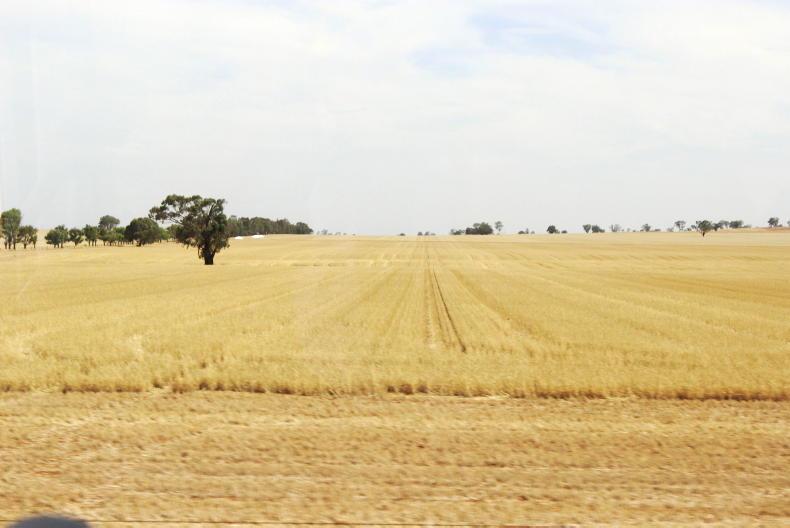
A crop harvested using a stripper header for seed production looked as though it had still not been cut.
He said there are no restrictions on the chemicals or seed dressings used and while they have had some actives withdrawn in the past, these frequently return to the market.
He has approximately 30 growers who produce seed for him, but most have no irrigation and that has caused considerable supply problems in recent years.
There is a certification system in place for seed production and he is allowed to certify the seed himself. Rejection of seed does occur, but only occasionally.
Seed dressings are important, but farm-saved seed may or may not get dressed before sowing. Given the dry climate, Robert said that he can hold seed for up to four years, providing it is managed properly.
It was interesting to note that some of the dressed seed in his stores had been treated with Cruiser, a neonicotinoid insecticide.
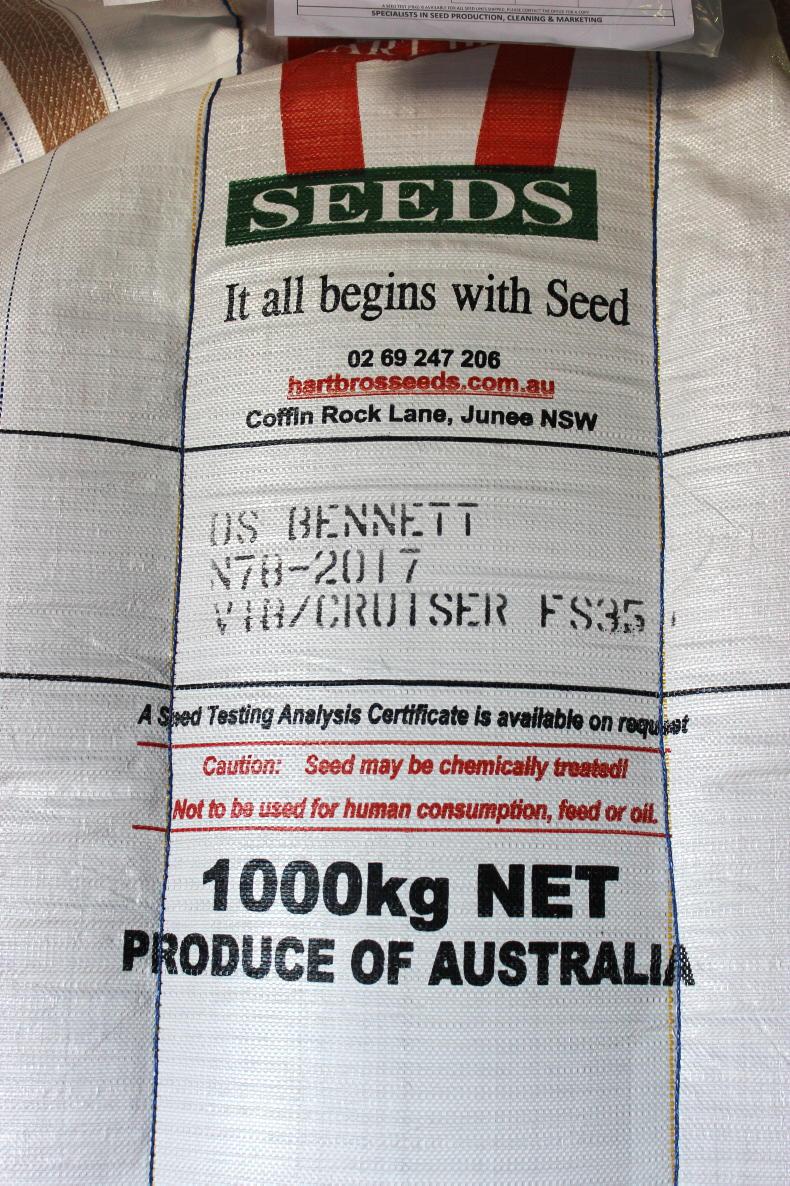
A one tonne bag of seed dressed with Cruiser neonicotinoid insecticide at Hart Bros Seeds.
Seed is tested for vigour, purity and germination. He said that there were some wild oat problems about, but that this was not a big issue for those producing seed.
The Hart farm
Robert also operates a 9,000-acre farm. Crops are grown on most of the land, but he also has around 4,000 breeding ewes and finishes the lambs at a small lamb feedlot. The land extends roughly 50km top to bottom and about 15km east to west.
It was interesting to hear Robert say that his grain farming was OK, but that the lambs were where the profit was.
At the time we visited, dressed lamb prices had risen from around AUS$4 to $5/kg (€2.50/kg to €3.20/kg) to $8/kg to $9/kg (€5.12/kg to €5.76/kg) because of the problems that African swine fever had caused in China.
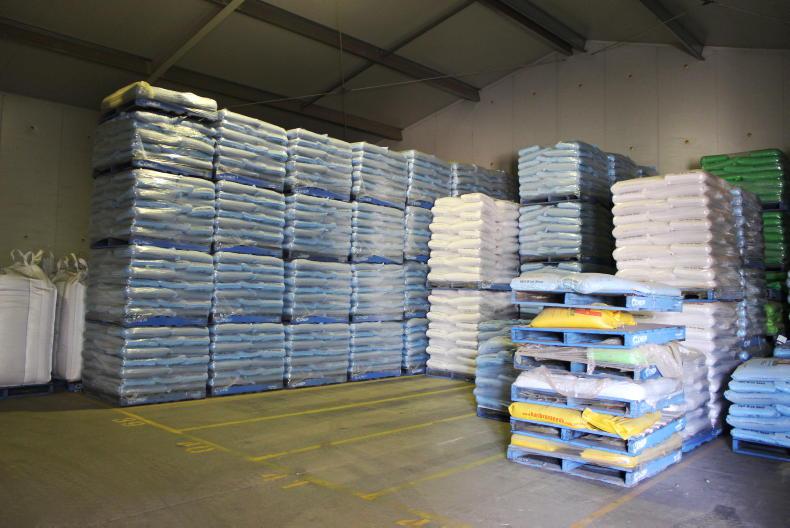
Seed in small bags on pallets in a seed store.
Robert described the region where he farmed in the Riverina as being big wheat, barley, canola and pulse country.
At the time we visited, there was almost no water in the land. He said he needed about 8in of rain to get a crop established, plus at least double that amount to get a crop through the growing season.
Rainfall level in the area is normally about 20in per year, so it is a real challenge to collect and store water outside of the growing season.
He indicated that the traditional farming system in the area was under pressure and 2019/20 may have been the first year in some time that farmers had to borrow working capital to operate their farms. Borrowing capability is heavily dependent on land values, which are the main safety net.
Asked about field size, Robert commented that he had 2,000 acres in just three fields. That said, his preference is for a field size of around 100 hectares or 250 acres.
All his combines have 12m headers, the same working width as his seed drill. All spraying and spreading is done at 36m.
Corporate farms
Robert stated that there were quite a number of corporate farms in the general area. These tended to be between 40,000 and 60,000 acres in size. By contrast, 5,000 acres was still a big family farm in that area and that can be big enough, he commented.
The corporate business model varies from having the land fully leased out to others, to managing the entire land base. However, Robert commented that once land goes into corporate ownership, it seldom comes back out to family farmers.
This really hits local communities, because the people are then gone and so are the children, the schools, the shops, etc.
For this reason, he would like to see the government break up these big farms again. They did this in the past.
Corporate may mean more foreign money coming into the country, but it comes at what he described as a very big local cost.
Hart Bros Seeds is a seed multiplication business located at 263 Coffin Rock Road, Erin Vale, Junee, New South Wales (NSW) in Australia.
The Irish Tillage and Land Use Society (ITLUS) tour visited there in January 2020 and we met with its director Robert Hart.
He told us that the seed business in Australia was government controlled up to about 40 years ago. His father started the business in the 1960s.
Somewhere prior to 2000, the government got out of plant breeding, so the whole seed business changed. Royalties were introduced and companies entered into agreements and associations with plant breeders.

One of the many seed stores at Hart Bros.
Hart Bros Seeds is now primarily a wholesale seed multiplication business with very little seed sold direct to farmers.
Paper trail
“Our business is essentially a big paper trail,” Robert stated. "We clean and package seed for other companies.
"We also run two hectares of our own trials to evaluate varieties and a further three hectares for other companies."
The vast bulk of their seed business is for cereal varieties, but they also multiply canola and pulses, as well as some historical or heritage seeds.
Having variety trials, they run two field days per year to show off the varieties being grown.
One of these takes place in October to view the crops growing in the field and the second takes place in February to give the results of the evaluations. These are mainly targeted at agronomists, but farmers are also welcome.
Increasing pressure
Irish spring barley growers may be interested to know that RGT Planet is one of the varieties grown, so it casts a long shadow to a very different type of climate.
The seed multiplication business is under increasing pressure, because farmers are not registering the purchase of these new varieties.

The seed treatment plant at Hart Bros Seeds.
Inter-farm seed trade is increasing and the overall seed business is contracting. This represents a real threat to the business and Robert was less than sure what the future holds for him.
Growers growing a new variety would often sell the produce to some of his friends and neighbours. Some seed businesses had already closed.
The seed business
Hart Bros Seeds normally sells 2,000t to 3,000t of seed each year. But when we visited, he reckoned that he had sold 1,800t for that year.
The lower amount was because they just did not have the seed to sell due to a big demand for anything that could be eaten, including seed, to counteract the extreme drought.
Seed is packed in small bags (40kg) and in 1t bags, but most is now sold in 1t bags. The dressing of the seed is always left as late as possible to leave flexibility on seed demand and use for as long as possible.

The Hart Bros business uses multiple bins to store seed of different varieties and they produce an amount of solar power.
Seed is subject to royalty payment, but Robert said that the royalty itself is voluntary payment, so growers could declare whether they wanted to pay it or not.
Interestingly, he said the system used is an “end-point royalty”, which means that the royalty is payable per tonne of the grain produced from the seed rather than on the tonne of the seed sown.
Technically, the royalty should be deducted at the point of sale to the first buyer. The royalty level tended to be between AUS$4/t and $5/t (€2.50/t to €3.20/t).
Different states are better or worse at declaring for royalty payment. Robert described NSW as poor, but Queensland has been very poor in this regard.
He commented that this royalty money should be going to fund the development of new varieties and he is worried that a lack of funding may hinder variety development in the future.
Stripper header harvesting
Seed crops are harvested using a stripper header to take off the grain. We saw some of those stubbles along the road and the crop looked like it had not yet been harvested.

A crop harvested using a stripper header for seed production looked as though it had still not been cut.
He said there are no restrictions on the chemicals or seed dressings used and while they have had some actives withdrawn in the past, these frequently return to the market.
He has approximately 30 growers who produce seed for him, but most have no irrigation and that has caused considerable supply problems in recent years.
There is a certification system in place for seed production and he is allowed to certify the seed himself. Rejection of seed does occur, but only occasionally.
Seed dressings are important, but farm-saved seed may or may not get dressed before sowing. Given the dry climate, Robert said that he can hold seed for up to four years, providing it is managed properly.
It was interesting to note that some of the dressed seed in his stores had been treated with Cruiser, a neonicotinoid insecticide.

A one tonne bag of seed dressed with Cruiser neonicotinoid insecticide at Hart Bros Seeds.
Seed is tested for vigour, purity and germination. He said that there were some wild oat problems about, but that this was not a big issue for those producing seed.
The Hart farm
Robert also operates a 9,000-acre farm. Crops are grown on most of the land, but he also has around 4,000 breeding ewes and finishes the lambs at a small lamb feedlot. The land extends roughly 50km top to bottom and about 15km east to west.
It was interesting to hear Robert say that his grain farming was OK, but that the lambs were where the profit was.
At the time we visited, dressed lamb prices had risen from around AUS$4 to $5/kg (€2.50/kg to €3.20/kg) to $8/kg to $9/kg (€5.12/kg to €5.76/kg) because of the problems that African swine fever had caused in China.

Seed in small bags on pallets in a seed store.
Robert described the region where he farmed in the Riverina as being big wheat, barley, canola and pulse country.
At the time we visited, there was almost no water in the land. He said he needed about 8in of rain to get a crop established, plus at least double that amount to get a crop through the growing season.
Rainfall level in the area is normally about 20in per year, so it is a real challenge to collect and store water outside of the growing season.
He indicated that the traditional farming system in the area was under pressure and 2019/20 may have been the first year in some time that farmers had to borrow working capital to operate their farms. Borrowing capability is heavily dependent on land values, which are the main safety net.
Asked about field size, Robert commented that he had 2,000 acres in just three fields. That said, his preference is for a field size of around 100 hectares or 250 acres.
All his combines have 12m headers, the same working width as his seed drill. All spraying and spreading is done at 36m.
Corporate farms
Robert stated that there were quite a number of corporate farms in the general area. These tended to be between 40,000 and 60,000 acres in size. By contrast, 5,000 acres was still a big family farm in that area and that can be big enough, he commented.
The corporate business model varies from having the land fully leased out to others, to managing the entire land base. However, Robert commented that once land goes into corporate ownership, it seldom comes back out to family farmers.
This really hits local communities, because the people are then gone and so are the children, the schools, the shops, etc.
For this reason, he would like to see the government break up these big farms again. They did this in the past.
Corporate may mean more foreign money coming into the country, but it comes at what he described as a very big local cost.







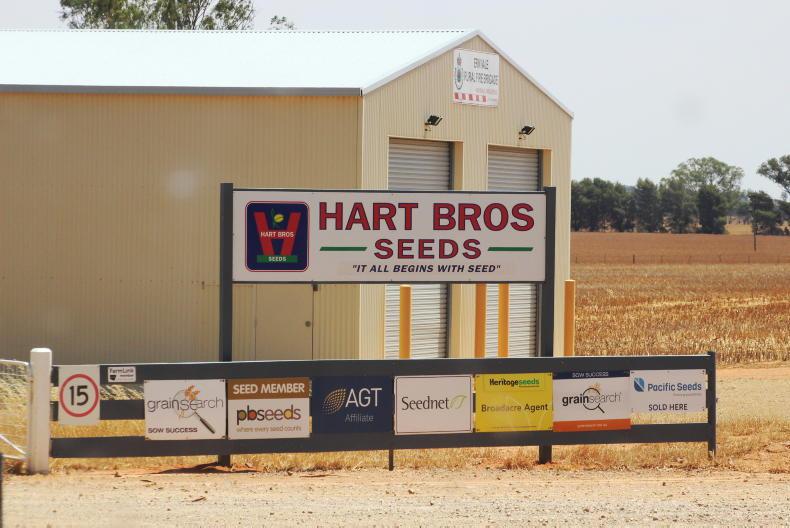





 This is a subscriber-only article
This is a subscriber-only article










SHARING OPTIONS: